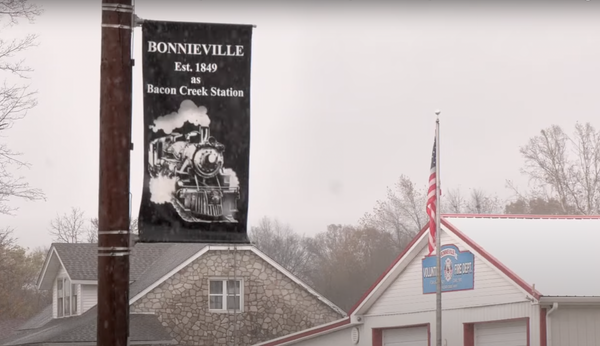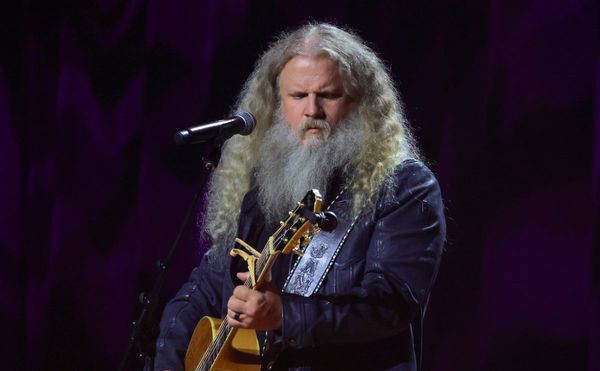IN 2021, respected Scottish comic book writer Robbie Morrison picked up Bloody Scotland’s award for best debut crime novel.
His brutal take took readers into 1930s Glasgow in the aftermath of the First World War, focusing on Detective Jimmy Dreghorn and his parent “Bonnie” Archie McDaid as a serial killer stalks the city.
They’re members of the “Tartan untouchables” – based on when Glasgow controversially appointed Englishman Percy Sillitoe as chief constable in 1931, who swiftly rounded up a group of the toughest officers recruited to wage a war on crime.
Now Dreghorn is back in Cast a Cold Eye. We’re still in 1930s Glasgow and a suspected IRA cell is at large.
Ahead of his chat with fellow crime writer Alan Parks at this year’s Aye Write, Morrison spoke with The National about how his family inspired the novel and whether we might see his characters make the journey from the page to the screen.
What drew you to this particular period of history?
“I’ve been fascinated with the 1930s, and Glasgow especially, for as long as I can remember. This stemmed from a combination of my family history which has connections to shipbuilding going back four generations on both sides.
“As well as this, I have a love for the hard-boiled crime fiction of Dashiell Hammett and Raymond Chandler, and the gangster films of Jimmy Cagney and Humphrey Bogart.
“These fast-talking, sharp-suited protagonists also influenced the razor gangs that terrorised certain areas during this time.”
What was Glasgow like during this period?
“Glasgow during the Great Depression was a tough, raucous city with extremes of wealth and poverty, unemployment, sectarianism firebrand politics and a dangerous criminal underworld.
“I wanted to write a story that captured the power and drama of those times – the spirit of the people and the spirit of the city but which would also hopefully have resonance to our world now.
“During the 1990s, I lived opposite Central Police Headquarters on Turnbull Street, where the main characters are based. Even then I had a loose idea for a crime series set in 1930s Glasgow.
“If only I’d known then where it would be set I could have saved myself a ton of research.”
How did your own family history influence your writing?
“Dreghorn’s background is partly inspired by my paternal grandfather, a boilermaker/caulker who worked in black squads in various shipyards on the Clyde and boxed for a time under the patronage of Sir Iain Colquhoun, whose family home of Rossdhu, Luss is now the Loch Lomond Golf Club.
“My other main character McDaid is also based upon a policeman of the period – a larger-than-life Olympic medal-winning wrestler, police heavyweight boxing champion and champion bagpipe player.”
Was it easier writing a sequel given these characters are already established?
“In some ways yes because you’re building upon a world and characters you’ve already created, but you need to be mindful of new readers.
“Every story is someone’s first, so you have to almost reintroduce the characters and situations.
“Even though the books are in many respects set up as a series, each story should stand alone so it can be enjoyed without prior knowledge of previous books.
“Once you have characters that an audience seem to like, a lot of the fun is then building stories around them.
“Also one of the good things about historical fiction is that you have the grand canvas of history to draw inspiration from. The 1930s and 40s weren’t exactly uneventful so there should be no shortage of storylines.
“Edge of the Grave drew upon the Great War and the Quintinshill Rail Disaster, while Cast a Cold Eye references the Partition of Ireland and the Irish Civil War.
How does writing novels compare with comic-book writing?
“There are big differences between the two mediums. However, the principles of good storytelling are the same.
“Comic scripts are similar in format to a film or TV script and are at the first stage in that creative process only seen by the editor, artist and letterer.
“The prose in a novel has to be tighter because that’s the final product. When writing a comic’s script you’re aiming to fire up the artist’s imagination with your descriptions of character and action.
“When writing a book, you aim to get readers’ imaginations working in pretty much the same way. The great thing about a novel is that each reader has their own unique, personal image of the characters – as a writer, the reader’s imagination is one of the most powerful tools you have.
“Spark that off and you can go anywhere.”
Do you think there’s potential for these books to be adapted to the big or small screen?
“I certainly do and would obviously love to see that happen but then I am a wee bit biased.
“Recently, Glasgow stood in for Gotham in The Batman and 1960s New York in the new Indiana Jones film, so it would be great to see Glasgow onscreen as itself for a change, especially in all its 1930s glory.”
Robbie Morrison and Alan Park’s Aye Write event will take place on May 27 at the Mitchell Library in Glasgow.







